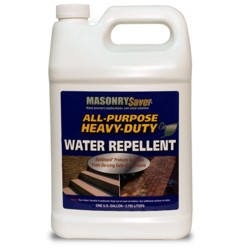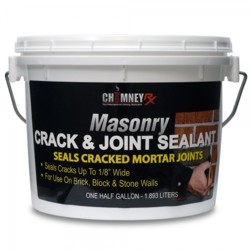Creating the Perfect Caulk Joint Every Time
On a recent trip, I observed a caulk joint in an airport bathroom. The person who applied it - I am convinced - used his big toe to smooth the joint. There was caulk 3/4 of an inch on either side of the 3/16 inch wide crack!
Getting the Tools Set Up
All too often people start to caulk with just the caulk tube and the caulk gun. They cut the tip and get going. Big mistake! If you are using a water based caulk, you need to have a bucket of clean water, some rags, a grout sponge and possibly some paper towels. If you are using silicone caulk, you will just need lacquer thinner and some rags.
The water and/or lacquer thinner are important. These are the solvents needed to wash away the smears from either side of the caulk joint once it has been tooled.
Suggested Tool List
Cutting the Tube Tip
Perhaps the largest cause of caulk joint messes can be traced to improperly sized caulk tube tip cuts. The caulk tube nozzle needs to be trimmed well if you want to prevent a mess. I like to cut the tip at a 30 to 45 degree angle.
You simply need to match the size of the tip opening to the crack you are caulking. I trim a little at a time and try to get the opening of the nozzle about 1/16th inch smaller than the width of the crack to be caulked. If the nozzle opening is wider than the crack, you will deliver too much caulk to the crack. ALWAYS cut the tip a little bit at a time. Enlarge the hole by shaving off additional layers of the tip. Don't hack away at it.
Deep Cracks Need Backer Rods
Professional caulkers use foam backer rods to fill deep cracks. The general rule of thumb is cracks over 1/4 inch deep must be filled first with foam backer rods. If you do not do this the caulk seam will most likely experience excessive shrinkage.
The backer rods can be tough to locate. The best place to find them is a store that sells masonry supplies and concrete supplies to professional contractors. Look in your Yellow Pages under "Concrete / Masonry Supplies".
A Good Gun
Smooth seams don't happen by accident. Spend the money and get a caulking gun that has a good trigger linkage. Don't buy the cheapest model. You need one that will have a good variable pressure trigger. The good guns have a thumb lever that quickly shuts off the caulk when you have finished the joint.
Just recently I began using a professional gun to apply caulk. For 25 years I had been using the same type you probably have. As soon as I switched to the good gun, my joint quality improved 50 percent! The good guns give you fantastic control as you inject cracks with caulk. Inferior guns push the caulk out too rapidly with each handle squeeze.
Apply Slowly
When you start to caulk don't get too much flowing at once. You want just enough caulk to flow out to fill the crack and hump up ever so slightly. Practice on some scrap lumber first.
Caulk Several Feet and Then Stop!
Apply caulk to several feet of crack and then stop. Use your finger to gently tool the joint. If lots of excess caulk starts to build in front of your finger, take the excess and deposit it in a paper towel.
If you are using water based caulks, get the grout sponge slightly wet and lightly wipe down the joint. Rotate the sponge to expose a clean face or edge. Lightly stroke the joint until you are satisfied with the appearance.
If you use silicone caulks you can't use water. You saturate a rag with lacquer thinner to tool the joint. BE SUPER CAREFUL! Lacquer thinner is highly flammable, explosive, etc. NO open flames, cigarettes, etc. are allowed while caulking. Burn the rags immediately after use.
If you live in Arizona and are doing exterior caulking with an acrylic caulk, it can skin over (dry) so fast it will make your head spin. I have had it happen to me here in Cincinnati, Ohio, in the summertime. When you think this might happen, just caulk a short stretch of crack and tool it. The caulk you apply next will stick readily to the freshly tooled caulk.
Strike the Joint Multiple Times
Do not use too much water or thinner. You can actually dissolve and ruin the caulk. The trick is to make multiple light passes with the sponge or rag. If you practice this technique, you will see how effective it really is. Each pass takes out just a little more caulk and/or removes the smeared part from the adjoining surfaces. Masonry surfaces are too coarse to respond to this type of treatment. When you caulk these joints you must go slowly and tool carefully. You can't rinse these joints!


